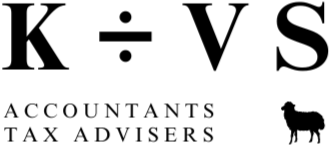Charity - Which structure should I choose?
K-VS Solutions • August 15, 2020
Incorporated or unincorporated, association, trust, company ... what does this all mean?
You’ve decided to set up a charity – and now you wonder what to do next. Well, one oft he first questions on the list would be what structure to use.
In a nutshell, there are four structures you can chose from:
1. Trust
2. Unincorporated Association
3. Company Limited by Guarantee
4. CIO (Charitable Incorporated Organisation)
These four categories can be grouped into „Unincorporated“ (1-2) and „Incorporated“ (3-4). Incorporated entities are a legal entity in their own right, whereas unincorporated entities aren‘t.
There’s no ultimate answer to the question which structure is best. It depends – on your circumstances, income, plans, and even your risk-aversion.
Trust
This is by and large the simplest structure and quite suitable for small charities. The trustees run the charity and make all the decisions – nobody else is involved in the decision-making process. This set-up is particularly suitable for small, grant-making charities which don’t engage in any other business activities. In a nutshell, if your charity is simple and low-risk, a trust may well be the structure to go for. The administrative side of things is relatively simple and the charity is solely regulated by the Charities Commission, so you don’t have to worry about complying with Company legislation. One thing to keep in mind when running a trust is the fact that a trust is not a legal person in itself, so liability lies with the trustees, in other words – it’s their neck on the block!
Unincorporated Association
This might be the right structure for you if your charity has what is called a „wider membership“, that is, if people other than just the trustees make decisions. Else it is also unincorporated, so the administrative side of things is relatively simple, and it is suitable for smaller, low-risk charities. Again, it is not a legal person in itself, so it is not protected by limited liability.
Company Limited By Guarantee
For years, this was the only option for trustees who wanted to protect themselves against personal liability. The main advantage of running a company charity is its limited liability. The company is a separate legal person, so it can own land and buildings, buy and sell assets or employ staff in its own name. The trustees' liability is limited to a certain amount, usually £1 or £10. Some donors, grant or other finance providers may also prefer to work together with companies, but in how far this really makes much of a difference for smaller charities is an entirely different question and needs to be assessed on a case-by-case basis.
The main disadvantage of running a Ltd Charity is bureaucracy. Ltd Charities are more complex and the administrative burden to run one is much higher than for unincorporated structures (or CIOs, see below). If you are running a Ltd Charity, the charity will have to comply with the Charities Act AND the Companies Act, so the accounts will generally be a bit more complex and have a bit more legal terminology in them. It also means that more documents need to be filed with Companies House, and there’s the risk of late filing penalties.
Finally, a company charity must submit „accruals accounts“. They are more complex and formal than „receipts and payment accounts“ which are permitted for non-corporate charities and CIOs up to an income threshold of £250,000. As an accountant, I don’t promote the use of „receipts and payments“ and would only recommend them for very small charities, but that’s a whole new topic for another post.
CIO (Charitable Incorporated Organisation)
Introduced in 2013, CIOs appear to have proved quite popular, and understandably so – they combine the main advantage of a company charity (limited liability) with the main advantage or an unincorporated charity (relative simplicity). Like unincorporated charities, CIOs only register with the Charities Commission and are not governed by Company Law, which means less hassle. Yet, they are a legal entity in their own right and can be set up with or without a wider membership in mind.
CIOs only file their accounts with the Charities Commission – but must do so regardless of size. Other charities only can (and indeed must) register if their income exceeds £5,000. It could be argued that this is a two-edged sword, because CIOs must submit accounts with the Charities Commission even if their income in any given year is below £25,000 (other charities don’t have to do this, but bear in mind that Ltd Charities must file accounts with Companies House regardless of size).
So, if CIOs are so great, why aren’t all charities CIOs nowadays? In fact, a lot of new charities are! But it certainly isn‘t the right structure for everyone. To start with, you might be running a charity which was set up prior to 2013, with established processes and procedures, and converting from a Limited Company or Trust to a CIO might simply not be worth the cost and effort. The old rule applies: if it ain’t broke, don’t fix it!
There are also some disadvantages to CIOs compared to Ltd companies, but how much they matter to small charities in real life is a completely different matter. One of the more significant disadvantages is that a CIO only exists for as long as it is registered with the Charities Commission. If it loses its registration, it ceases to exist. If a Limited Company loses its registration, it does not cease to exist as it is still registered with Companies House! But then, ask yourself the question, how likely is it that a well-run charity loses its registration?
In addition to this, CIOs may find it more difficult to borrow money from banks, because charges can’t be registered with the Charities Commission (only with Companies House). Again , in how far this is relevant for small charities that don’t depend much on third-party loan finance is another matter.
Also, some charities (for example exempt charities) cannot be CIOs. But exempt charities are quite a niche area.
Some argue that one drawback of of a CIO is the fact that it is a relatively new structure and the public may not be very familiar with it. I don’t believe in this argument for two reasons: (1) CIOs have been around for 7 years – they can hardly be called new any more. (2) How many members of the general public would care whether your charity is a CIO, Ltd or trust as long as you are registered with the Charity Commission? Arguably grant providers might, but they operate in the industry, so should be familiar with the setup.
So in summary, there is no perfect, one-size-fits-all approach, the right very much depends on the trustees' own preferences and the charity's circumstances!
Get in touch if you would like to discuss this topic further …
getintouch@k-vs.co.uk

Is there another charity out there doing something similar? Maybe you are past this stage. Maybe you want to support a particular project or market, and there simply isn’t a charity that does exactly that. If you’ve done that, stand back and reflect. Perhaps come back later and read the rest of this article. Do you really have the time, money, energy and, for want of a better word, endurance to run a charity just for that warm and fuzzy feeling you get knowing that you support a particular cause close to your heart? There may be other charities that do similar things. Maybe not exactly the same, but think again. There may be a bit of a compromise, but it may well be worth it. The fact is that setting up and running a charity is no mean feat, other established charities may have a better infrastructure, a better network, greater reach, so your contribution could go further. This is not meant to discourage you, it's just meant to say it as it is – it is going to be a big effort, so before you get started, stand back and reflect. And then think about it again. Talk to friends and people you are going to work with (because you will need them – not just proverbially but legally). Still convinced setting up a charity is the best option for you? Excellent. Then read on …

Twitter is amazing. You can follow anything and anyone, and the abundance of opinions is just mind-boggling. Want an example? Just search Twitter for Flat Earth. Alright, I have probably just made some enemies among Flat Earthers, but on the other hand, Flat Earthers are unlikely to read an article on Charity Governance, so that’s alright. So, it was on Twitter where someone recently voiced their dismay at the rule that prohibits trustee remuneration for charities and demanded that this rule should be changed. I’m not quite sure if this was a serious request or whether I missed the irony, but it certainly got me thinking. Do we really need to change the laws on trustee remuneration? Well, the short answer is no. The long answer is no, we don’t. The question whether or not trustees can be paid is not as straightforward as it seems at first glance, and to say that trustees can’t be paid at all is a generalisation, because under certain circumstances they can. However, I strongly suspect the Twitter user who demanded the rule change wasn’t referring to the exceptions which exist, but was referring to the fact that charity trustees cannot be paid for their services as trustees. I don’t want to go too much into detail about the instances where they can be paid for other services to the charity, and the safeguards that need to be in place, but there is a good guide on the Charities Commission website, should you be interested. But don’t head off to the Charities Commission’s website yet, as tempting as it may be; bear with me for a few moments. Under current legislation, charity trustees can’t be paid for their services as trustees, and just for the avoidance of doubt, there are currently no plans to change this. I don’t think there will be any in the foreseeable future. The role of charity trustee is that of a volunteer. Arguably this is tough, because the trustees are responsible for running the charity, and that’s not much different from being directors in commercial enterprises. In fact, if the charity is a company, the trustees are also company directors, so the burden on their shoulders is quite heavy. And you say they can’t be paid for it? Precisely. It’s unfair, isn’t it? Maybe. But what’s the alternative? Well, getting paid, obviously. But that opens up a completely new can of worms. Let’s just imagine a world in which trustee remuneration is permitted. This would instantly raise a few questions. Who would set the remuneration levels? As the trustees are the most senior members of the charity, it would obviously be them. In other words, it’s a blank cheque. I mean, what level of remuneration would they choose? Sure, some trustees would forfeit their remuneration completely or chose very moderate salaries, but we don’t really need to look at those because they aren’t the ones calling for a change of the law, they are perfectly happy with it as it is. This leaves the trustees that would pay themselves handsomely. In actual fact, it wouldn’t just “leave” the ones that would pay themselves handsomely, it would attract people to the role of trustee who would want to pay themselves handsomely. Without a doubt they would come up with a whole load of reasons why they should be paid what they want to get paid, but the clincher is that there would be no control mechanisms in place to stop them. Sure, the Charities Commission could issue a rule that trustee remuneration should not exceed a certain amount, say x, whereby x could be a fixed figure or a percentage of the charity’s income. Both would cause more harm than good. Let’s say x is a fixed number, say £50k (either per trustee or cumulatively for the entire board, it doesn’t really matter for the sake of this example). Regardless of the charity’s income, the trustees would have an incentive to pay themselves the full amount, even if that meant that there would be not much left to pursue the charity’s objects, which is clearly not in the public interest, or “public benefit” to use charity-speak. On the other hand, if x is a percentage of the charity’s income, what should this include? Income from donations? Sure, because this is a significant income stream for most charities, not including it would skew matters quite badly. But then, should it also include donations in kind? Well, they have to be accounted for as income according to the SORP! Now imagine a charity that receives considerable amounts of donations in kind or pro-bono services. Including those would inflate the level of permitted trustee remuneration without bringing in any actual cash. Similarly, what message would it bring across if we were to include donations? Would you give to a charity knowing that x% of your donation would go straight into the trustees’ pockets? Many people already have a problem with charities’ admin costs and the perceived high levels of senior management salaries, so what would Joe Public think if we included trustees in that group? Yes, I hear you – the trustees would arguably replace senior management and there’d be no need to employ CEOs any more, but can we really be sure of this, or wouldn’t we (in many cases) just add another layer of management (and potentially very expensive one as well)? Yet, on the other hand, we cannot exclude donations (and grants, for that matter) from x because that would put charities which heavily rely on them (and let’s face it, that’s a lot of charities) at a significant disadvantage. This all doesn’t even take into account the inherent scope for abuse of the core principle of charities: public benefit. Charities have to operate for the public benefit, not for the trustees’ benefit. Allowing trustee remuneration would water down this core principle, and with it public trust. This takes us to the next problem: what would prevent someone from setting up a charity for their own benefit? Let’s take someone who likes parrots. Ok, that's quite random, I was thinking of cats, but couldn't find a decent cat picture (believe it or not), so parrots it is. So, what would prevent someone from setting up a parrot charity (or a cat charity) with themselves as a trustee, just to secure an income? This would completely break public trust, and that’s not what the charitable sector needs at the moment. After years of negative publicity, mainly brought upon us by a few black sheep, the Third Sector and its regulator have a duty to strengthen public trust, not to erode it. So I'm afraid no, dear Twitter user, changing the laws on trustee remuneration is not a good idea. Now, back to the Flat Earth Theory ...


